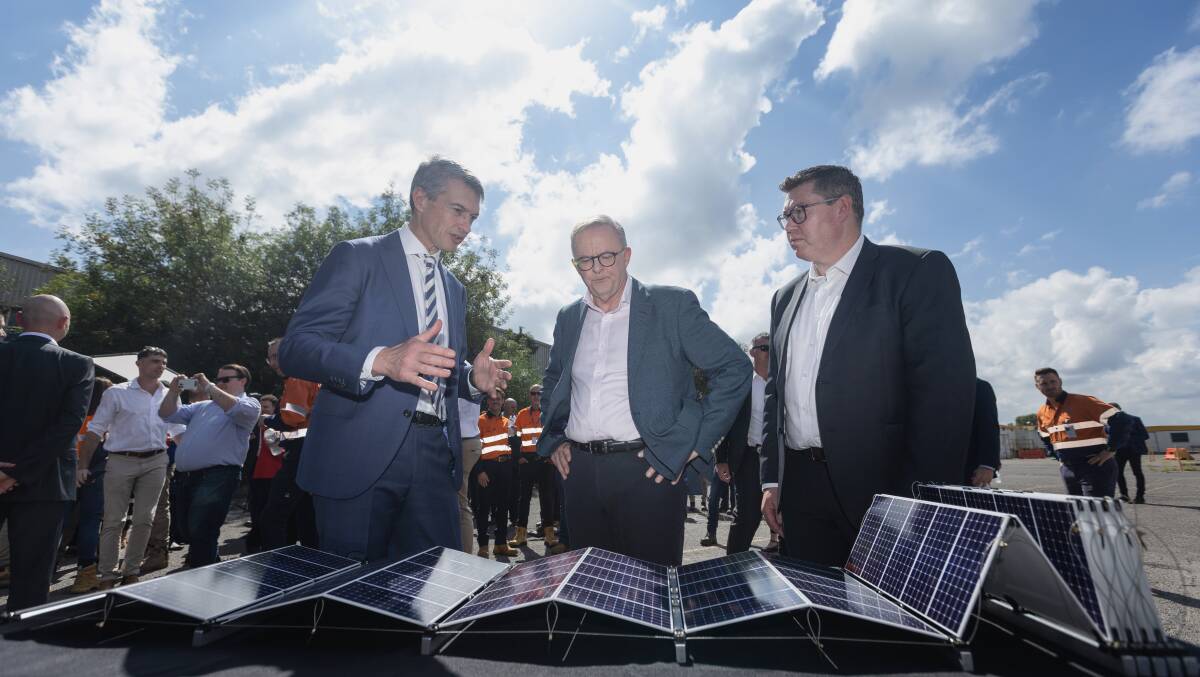There's a bidding war on for the trillion-dollar global solar industry that ironically enough started with Australian technology decades ago. This industry is big now, but it's only getting bigger as the world races to net zero.
Between now and 2030 we expect as much solar generation capacity to be installed, as in the previous 50 years. By the end of the decade the global solar industry could be worth $2 trillion - and Australia deserves a slice of it.
We deserve it because it's our technology. Australian scientists have been responsible for significant breakthroughs that led to the last three generations of PV solar technology. What do we have to show for it?
The good news is, the Albanese government has started to place bids on solar manufacturing. The $1 billion SunShot Solar Program announced on March 28 will secure at least one manufacturer. This is an excellent start, but this cannot be where the bidding ends.

We're facing stiff competition - China is a manufacturing powerhouse that currently supplies 90 per cent of the global market for solar panels. China has also substantially cut the cost of solar panels and components for domestic use through the scale and efficiency of its operations.
So, what are we bidding for? By 2060 we could be looking at a million high-paying jobs in renewables. We need to onshore this work in Australia for Australians. Greater investment in renewable manufacturing can deliver secure, well paid and sustainable jobs in Australia. This will help secure economic prosperity for generations to come.
The renewable energy, critical and strategic minerals industries are a natural fit for Australia. We have the skills, the know-how and the resources needed to be a world leader in smart energy manufacturing. The Albanese government needs to take strong affirmative action to secure our place.
Right now, the United States is getting in the game in a big way and the next big opportunity could be snatched from under our noses. President Joe Biden's surreptitiously named Inflation Reduction Act is unleashing US$ 1 trillion in support and tax credits to attract new businesses in the renewables industry. The EU, Japan and South Korea are following suit with investments in their industrialisation that Prime Minister Anthony Albanese admits is "unprecedented". This public investment is working and we are losing some of our most talented people to it.
Australia urgently needs to match like-with-like and tax credits are an excellent mechanism to attract, talent and investment into renewable manufacturing.
A Smart Energy Advanced Manufacturing Tax Credit for wind, solar and battery components will make us competitive with the US and China and ensure Australian firms make smart energy products in Australia.
Unlike a subsidy, a tax credit creates an incentive to achieve. They are discounts on a business's tax bill and are awarded on each unit of output. If you produce, you get a tax credit and if you don't produce, you don't get a tax credit.
When used strategically this approach can also increase the government's tax take by stimulating business and there's a big opportunity to do just that in the renewable sector.
Importantly, it creates a system of cascading incentives along the supply chain and can be factored into financial decision making - without the time and uncertainty of grant and auction schemes.
Tax credits are the ticket to encourage our resources sector to add value to the critical and strategic minerals we produce.
Australia is for the largest exporter of lithium, but now this is shipped off in rock to be refined overseas. What we ship is 1 per cent lithium and 99 per cent waste rock.
This is changing. Currently, three refineries are under construction in Western Australia. Modelling shows they could process up to 6 per cent of Australia's domestically produced lithium without further investment. That could increase to 31 per cent with the right settings in place.
READ MORE:
Australia also has a globally significant vanadium resource with major downstream manufacturing opportunities in long duration battery sector. There are multibillion-dollar battery manufacturing opportunities in Australia - waiting to be seized.
A modest 10 per cent production tax credit would help create an economic environment for refining that is favourable to business and which matches the new tax incentives in the US. If tied to a path to decarbonisation, this will go a long way to make Australia a global export leader in value-added critical and strategic minerals, powered by renewables.
Australia has all the ingredients for a high-tech future in renewable energy resources, critical and strategic minerals, but this is an industry being courted by the world's superpowers. The Albanese government has opened with a strong bid for the renewables business. They are back on the table. But now we need to go further.
- Scott Hamilton is adjunct associate professor at Monash University and senior advisor to the Smart Energy Council

